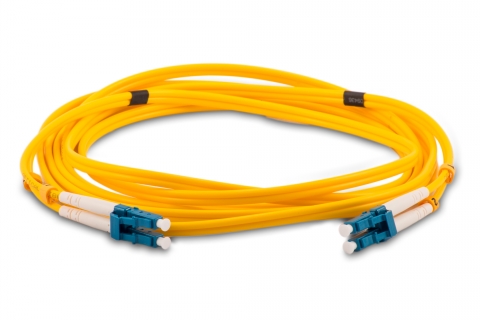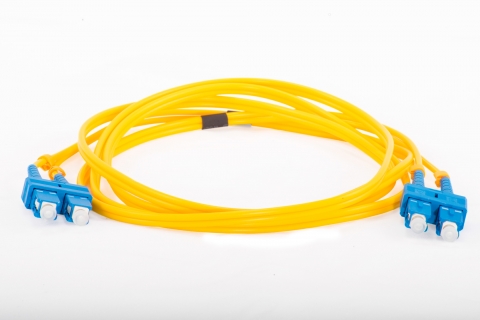Cables Blog
What Is Fiber Optic Cable?
browse multi mode and single mode fiber optic cable
There are two different types of fiber optic cords - multi mode fiber, and single mode fiber. Fiber optic cables work by transmitting data through pulses of light that travel through their glass filament cores at the speed of light.
by Vikas Dayal • April 25, 2023
Datacomm Cables, Fiber Optic Cables, Network Patch Cables, Patch Finder
What are fiber optic cables, and how do they work? There are two different types of fiber optic cords - multi mode fiber, and single mode fiber. Fiber optic cables work by transmitting data through pulses of light that travel through their glass filament cores at the speed of light.
What Are Fiber Optic Cables?
How does fiber optic cable work, and why should you consider buying it for your home or office data center setup? Fiber optic cables work by transmitting data through pulses of light that travel through the glass filaments at the speed of light. "Fiber" refers to the many superfine glass filaments contained within the cable jacket, whereas other types of cable would typically contain traditional copper instead. These glass cores consist of a flexible, transparent fiber drawn to a diameter that's even more fine than a single strand of human hair. This translates into data transfer speeds of up to 40 GB at distances of up to 150 meters in the case of our 10-gig OM3 Fiber Optic Patch Cables. This means that your fiber optic connection is much less likely to get distorted over long distances than a connection reliant on copper cables might be.
What Kinds of Fiber Optic Cables Are There?
There are two different types of fiber optic cords - multi mode fiber, and single mode fiber. How do you decide between the two? You would think that choosing a multi mode cable would be better that a single mode. When it comes to fiber optic connections, though, you would be mistaken. The biggest draw of single mode fiber optic cable is that it offers near-unlimited bandwidth. Take a look at our single mode OS2 LC to LC 9/125 micron fiber optic cables. These cables feature high-quality ceramic ferrules for optimal data transfer and are built to meet industry standards on insertion and return loss.

While single mode fiber cable only allows for one type of light mode to be transported at any given time, multi mode fiber cable allows for multiple types. When should you consider multi mode fiber optic cable over single mode? For one thing, multi mode cable is less expensive. Cables.com's OM3 LC to LC Duplex Multi Mode Fiber Optic Cables are available at the best prices in the industry, featuring an aqua blue 50/125 riser rated jacket at a slim 2mm diameter ideal for dense network switches in data racks. Our Datacomm-manufactured OM3 cables are capable of transmitting data of speeds up to 40Gb up to 150 meters, while our OM4 cables can achieve a performance of 100G over 100 meters.

Which Fiber Optic Cable Should I Buy?
It's not an easy decision to make! If you're not sure how to proceed, check out our Quick Patch Finder tool for network cables and power cords. You also have the option of purchasing Custom Cables, combining your choice in cables with the configuration or jacket color you would like, so you can be sure you're getting exactly what you came to Cables.com for.
Still Have Questions?
We'd love to hear them! Reach out to us by email at sales@cables.com, or Contact Us with our web form. We look forward to helping you with your cables shopping!
SHOP NOW: Single mode SC/SC 9/125 Micron Fiber Optic Cable - LC to LC OM4 Plenum Fiber Cables - LC to SC OM3 Aqua Fiber Optic Cable











